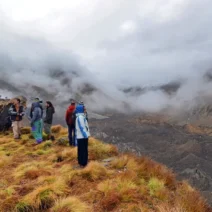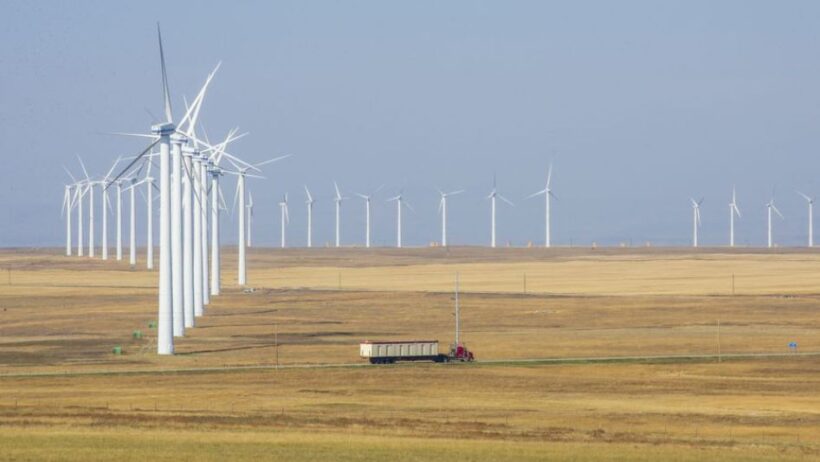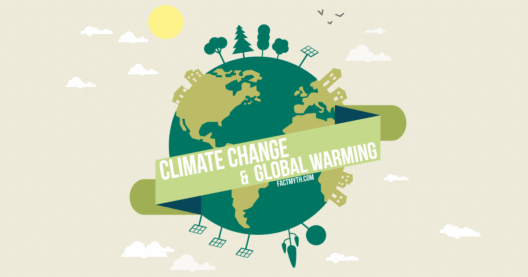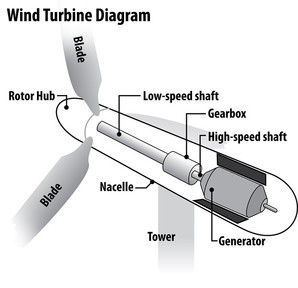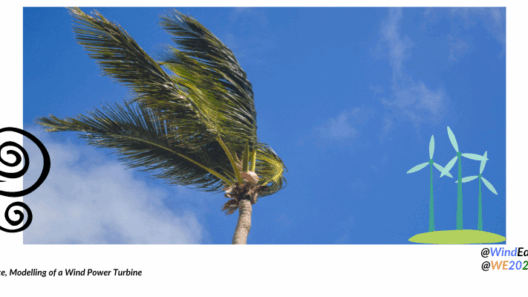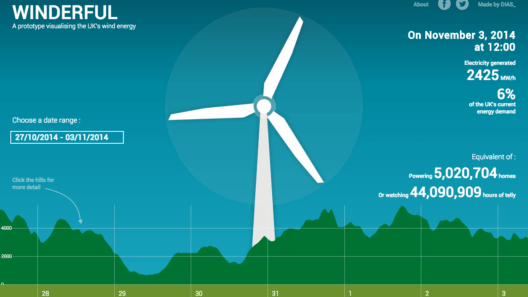The world is on a quest for sustainable energy solutions. As conventional fossil fuels continue to deplete and contribute to climate change, the alluring potential of wind energy captures our imagination. But just how much of this invisible force—wind—is harnessed for our energy needs? In this exploration, we delve into the percentage of wind utilized for energy production and the pivotal role of wind power on the global stage. Buckle up as we navigate through the exhilarating world of wind energy.
Wind, a natural phenomenon, has energized our planet for eons. However, when we inquire about its role in energy production, it’s essential to differentiate between wind as a resource and the actual energy harnessed from it. The capacity to convert wind energy into electricity depends on a myriad of factors, including technology, geography, and infrastructure. Each region possesses its unique wind patterns and strength, which ultimately determine how effectively this renewable resource can be transformed into usable energy.
Has it ever crossed your mind how such an elusive element could power the world? The sheer thought piques curiosity. What if we could capture every gust of wind that blows? The challenge, however, lies in maximizing the potential of wind energy while refining the technology used to convert it into electricity. The pressing question remains: what percentage of wind is truly being utilized for energy production?
Current estimates suggest that wind power contributes roughly 6% to 8% of the global electricity supply. While this may seem a minuscule fraction in relation to total energy consumption, the growth trajectory of this sector is remarkable and encouraging. Over the last few decades, there has been a significant uptick in the development and deployment of wind farms worldwide. In some countries, wind energy represents an even larger share of the energy mix, showcasing regional variances in wind energy utilization.
Wind Farms: Harnessing Nature’s Power
To understand the expansion of wind energy in the global marketplace, we must first explore wind farms—those colossal structures dotting landscapes around the world. These farms epitomize the technical advancement and innovation in turbine design and deployment. The mechanics of a wind turbine are deceptively straightforward; wind turns the blades, which then spins a generator to produce electricity. However, the efficacy of this process depends on a turbine’s height and sophistication. Modern turbines can capture greater amounts of wind at altitude, enabling optimum energy generation.
Additionally, the aggregation of multiple turbines into wind farms allows for economies of scale, making wind energy generation more cost-effective. As these farms proliferate, they become an essential component of many countries’ energy portfolios. The strategic placement of wind farms in areas with significant wind resources can result in higher energy yields, bringing the estimated percentage of wind used for energy into focus.
The Global Impact: Countries Leading the Charge
When dissecting the global landscape of wind energy production, it’s imperative to highlight regions that champion this renewable resource. Countries such as China, the United States, and Germany lead the charge in wind energy capacity and generation. China alone accounted for over 50% of global wind power installations by 2022, propelling it to the frontline of renewable energy production. The U.S. trails closely behind, with expansive plains providing an ideal setting for wind farms to flourish.
Furthermore, nations such as Denmark have demonstrated an ambitious commitment to wind energy, fueling up to 50% of their national energy needs with wind power. This success story depicts an encouraging trend in which other countries are urged to emulate. As global energy demands rise, the need for sustainable solutions becomes paramount.
Challenges Ahead: Can Wind Power Scale New Heights?
Despite the undeniable growth of the wind power sector, significant challenges remain. The intermittent nature of wind introduces variables in energy supply, requiring robust grid management strategies to maintain reliability. Furthermore, the integration of wind energy into existing energy structures necessitates considerable infrastructural investment and policy support.
Additionally, the environmental impact of wind farms—though generally seen as minimal compared to fossil fuels—must be examined. Issues such as land use, noise pollution, and the impact on local wildlife warrant careful consideration. Each new wind project brings with it a host of environmental assessments, balancing energy needs with the preservation of natural ecosystems.
Innovation can play a pivotal role in overcoming these obstacles. Emerging technologies such as energy storage systems and more efficient turbine designs promise to enhance the dependability and efficiency of wind energy. Moreover, increasing collaboration among governments, energy companies, and local communities fosters a holistic approach to sustainable energy advocacy.
Envisioning the Future: Wind Energy’s Role in Combatting Climate Change
The momentum behind wind energy is poised to escalate. As climate change continues to grip the planet, the urgency for cleaner sources of energy intensifies. Wind power, with its vast untapped potential, represents a crucial opportunity for nations to shift towards sustainable energy frameworks. International agreements, encompassing a collective desire to reduce carbon emissions, encourage investment in renewables, with wind energy emerging as a significant player.
So, what percentage of wind is used for energy? While the answer is currently just a fraction of the total energy spectrum, the landscape is ever-evolving. By addressing obstacles, fostering innovation, and nurturing public awareness, the percentage of wind harnessed for energy can rise dramatically. The future of energy lies in the gale that surrounds us—are we ready to embrace it?

